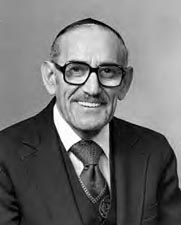https://forward.com/news/156692/agudath-israel-abuse-claims-go-to-rabbis/
*Agudath Israel: Abuse Claims Go to Rabbis*
An Orthodox parent whose child tells him he’s been sexually abused may not take that child’s claim to the police without first getting religious sanction from a specially trained rabbi, the head of America’s leading ultra-Orthodox umbrella group has told the Forward.
But one year after acknowledging that no such registry of trained rabbis exists, Rabbi David Zwiebel said that his group has now dropped the idea of developing one.
*
Orlando school employee arrested for alleged child sexual abuse; victim speaks out: police
Orlando school employee arrested for sexual abuse of child
FOX 35 Investigates after a local school employee was arrested for sexual abuse of a child, and the alleged victim reached out to us about the arrest. A man who works at the Orlando Torah Academy was arrested on Monday in Chicago and charged with criminal sexual abuse of a person under the age of 17. Today, the school told staff the employee has been removed from his post for now.
ORLANDO, Fla. - FOX 35 is investigating an Orlando school employee who was arrested for the alleged sexual abuse of a child. The victim reached out to FOX 35 about the case, saying he’d actually initially reported it to police back in 2021.
Avraham Levin, who goes by Avi, turned himself into police this week following the allegations.
Levin is now scheduled to be in court next month for the case.
What led to the investigation?
What we know:
Levin's arrest actually stems from a case in Chicago.
Chicago police say this all happened between October 2010 and April 2011, when Levin was 15 and then 16 years old. Michael Weldler, the alleged victim in the case, was 11, turning 12, at the time.
Chicago police confirmed with FOX 35 that they started investigating the case back in 2021, when Weldler first reported the incident. The group representing Weldler says Levin was arrested in 2022, but was let go over a confusion over the statute of limitations. FOX 35 is still working to independently confirm this with police.
Police say Levin moved to Orlando and was hired as a staff member at the Orlando Torah Academy last August.
Officials also confirmed the arrest this week is in connection with the case Weldler brought forward almost three and a half years ago.
What they're saying:
About four months before Levin started working in Orlando, Weldler said he went to Beth Din, part of the Chicago rabbinical council that hears abuse cases. This council can take actions within the Jewish community, such as warning others about previous allegations and barring people from certain religious ceremonies.
Weldler said he was uncomfortable about coming forward, but he knew he had a responsibility to help protect other children.
"I realized I had a responsibility to (the) kids," Weldler told FOX 35. "I can't change what happened to me, but I could prevent it from happening again. … I'm not one to put my face out there. I don't like it out there at all. I don't like talking, but this is so important to me that I'm willing to go against everything that I personally feel makes me comfortable in order to stop this, because that's what I need to do."
 |
| Avraham Levin is being charged with criminal sexual abuse of a person under 17, which is a misdemeanor, since Levin was also a minor at the time. He is scheduled to be in court next month for the case. |
The Orlando Torah Academy declined to comment on the case when FOX 35 Reporter Marie Edinger went by on Thursday, and they did not answer any emails on Thursday or Friday.
However, in a message sent to staff on Friday, they said they’ve "removed [Levin] from his post until further notice" following his arrest. The center also sent out an email to its attendees on Friday evening, adding that Levin is also no longer welcome in the synagogue.
FOX 35 also reached out to the Chicago Rabbinical Council on Thursday and Friday to ask if they were investigating the claims, but did not hear back yet.
In an email to Weldler, a detective on the case said that he wasn’t getting much help from them either.
What's next:
Records show Levin has bonded out of jail in Chicago.
Levin is scheduled to be in court next month in Chicago for the case. He is being charged with criminal sexual abuse of a person under 17, which is a misdemeanor, since Levin was also a minor at the time.
FOX 35 attempted to call and text Levin Friday, but he didn’t answer.
















.JPG)


